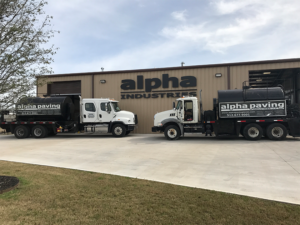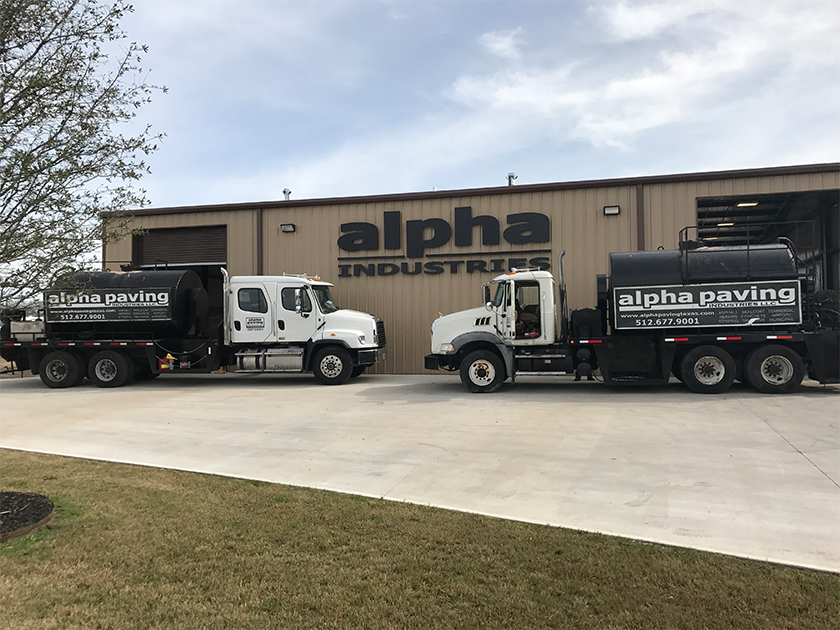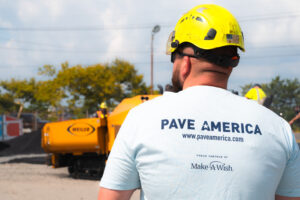 Do you know what servers at diners are ordering when they tell the cook to burn the British? In diner slang, the term refers to a toasted English muffin. In the fashion world, a fitter is someone who ensures that garments fit as they should, but in the dairy industry, a fitter is someone who travels the show circuit to get dairy cattle ready for the shows. Every industry has its unique jargon, and the asphalt industry is no exception. Although the terms used by asphalt contractors seldom involve slang or wordplay, industry terminology can still be confusing.
Do you know what servers at diners are ordering when they tell the cook to burn the British? In diner slang, the term refers to a toasted English muffin. In the fashion world, a fitter is someone who ensures that garments fit as they should, but in the dairy industry, a fitter is someone who travels the show circuit to get dairy cattle ready for the shows. Every industry has its unique jargon, and the asphalt industry is no exception. Although the terms used by asphalt contractors seldom involve slang or wordplay, industry terminology can still be confusing.
Knowing Your Basic Asphalt Industry Terms
What Are Some Common Asphalt Industry Terms Customers Encounter When Dealing With Contractors?
The asphalt industry has an extensive list of words and phrases that are either specific to the industry or have definitions that differ from other industries. Although not every term appears on the following list, you should be able to get a better understanding of basic terminology. Furthermore, whether contractors are installing new pavement, making asphalt repairs, or delivering parking lot striping services, reputable, competent contractors will know that they may need to define specific terms or procedures for their customers. They will be able to do so quickly and completely without resorting to vague or confusing explanations.
• Aggregate: Aggregates are hard minerals that are incorporated into the asphalt mix. Gravel, crushed stone, and sand are common aggregates. Aggregates can vary in size, and the size of the aggregates is the primary factor that determines whether they are graded as fine, coarse, dense, or open.
• Alligatored Asphalt: The term refers to asphalt pavement that has developed interconnected cracks that create a pattern similar to the pattern on an alligator’s skin. Alligator cracking is often the result of an unstable or eroded base or subgrade.
• Asphalt Overlay: An overlay is a layer of new asphalt applied on top of an existing concrete or asphalt pavement. Sometimes called resurfacing, the procedure can delay a pavement reconstruction for many years.
• Base: The base is the layer of material, typically crushed stone, that lies under the asphalt layers and above the subbase or subgrade. The depth of the base depends primarily on the intended use of the pavement. For example, when paving Austin TX parking lots or streets, the depth of the base is normally at least 18 inches, but a residential driveway may not need a base that is more than three or four inches in depth.
• Base Failure: The base is what provides the load-bearing capabilities of the pavement. A base failure means that the base can no longer support the weight of the pavement and its traffic properly. Base failure can be the result of a design flaw, erosion, ground movement, heavier loads than the pavement was meant to support, or a variety of other causes.
• Binder Course: The binder course is the layer of asphalt just beneath the surface course.
• Compaction: Compaction is the act of compressing material to make it denser. When installing asphalt, contractors typically use self-powered rolling machines to compact the base materials and each course of the paving asphalt. On some sites, they may also compact the underlying soil.
• Course: A course represents a layer of material. On a typical asphalt pavement, the first course is the subbase, followed by the base course. Next, the contractor will install the appropriate number of asphalt courses, a binder course, and the surface course. Contractors sometimes refer to the asphalt courses as lifts.
• Cracks: Cracks are splits in the asphalt pavement, and they can be tiny surface breaks or deep, wide cracks that threaten the integrity of the pavement. Longitudinal cracks are those that are parallel to the pavement’s centerline, and transverse cracks are those that are perpendicular to the centerline. Joint cracks are those that develop where two pavements meet, and edge cracks are those that develop where the shoulder and the pavement meet. Depending on the type of crack, the paving repairs could require crackfilling or crack sealing.
• Fall: The precise angle at which the slope of the pavement will allow water to drain from the pavement as efficiently as possible.
• Heat Lance: When sealing cracks in asphalt pavement, it is important to eliminate moisture and vegetation from the interior of the cracks before sealing them. Heat lances generate a high-velocity, hot stream of air to perform these tasks.
• Polished Aggregate: Over time, traffic can wear the stones or gravel in asphalt pavement until they take on a smooth, polished appearance.
• Pumping: Under load, slab deflection can sometimes force subgrade soils or water to the surface along pavement edges, cracks, or joints.
• Raveling: Raveling refers to the separation of the aggregates in asphalt pavement. Raveling may progress inward from the edges or downward from the surface course.
• Rutting: Ruts are channels in asphalt pavement that usually correspond to the path that vehicles follow within the traffic lane or aisle.
• Sealcoating: Sealcoating is the application of a liquid sealant on top of asphalt pavement. The sealant bonds with the pavement, forming a hard, protective shell after curing.
• Shoving: Shoving is a distortion of the surface of an asphalt pavement that resembles a pattern of ripples. Shoving usually occurs where vehicles are frequently braking, accelerating, or turning sharply.
• Subbase: The subbase is the course underneath the base course. In some instances, the subgrade may be an adequate sub base.
• Subgrade: The subgrade is the soil that serves as the bottom layer of the pavement. Sometimes, it will be necessary to amend the soil or install a subbase before installing the base course.
• Subsidence: Subsidence refers to the downward movement of the pavement or an area of the pavement. There are many possible causes of subsidence, including improper installation, soils with high clay contents that expand and contract frequently, or base erosion due to water penetration. Contractors often refer to small, shallow depressions in the surface of the pavement as birdbaths, and birdbaths can quickly turn into potholes.
• Surface Course: The surface course, as you might expect, is the layer of the pavement that will be in direct contact with the traffic. The surface course has a great deal to do with the safety and smoothness of the pavement.
If you have questions about paving terminology, feel free to contact the professionals at Alpha Paving. We offer an extensive range of services, including asphalt overlays and paving, parking lot maintenance, road construction, asphalt repair, parking lot striping, concrete work, and asphalt sealcoating. Our customers include property managers, retailers, municipalities, restaurants, subdivisions, airports, health care facilities, apartment complexes, religious institutions, and hotels. We deliver work of the highest quality at competitive prices. You can reach us by phone at 512-677-9001, or you can fill out our online form to request a free quote.




